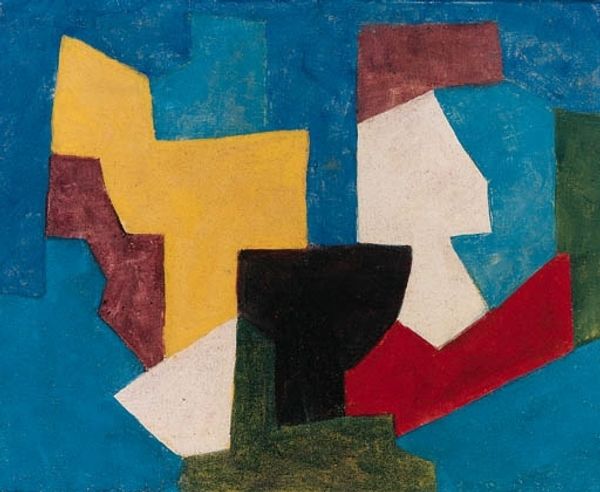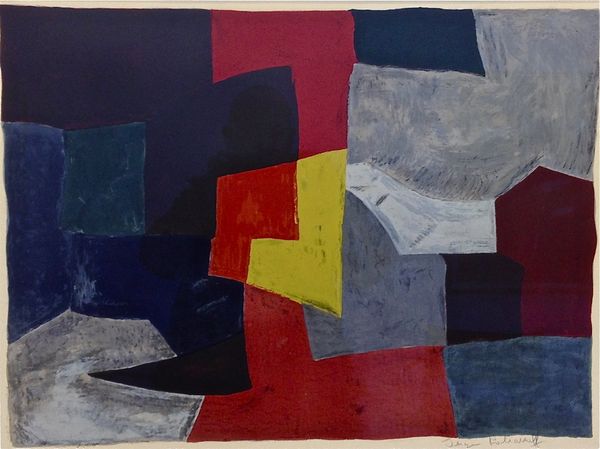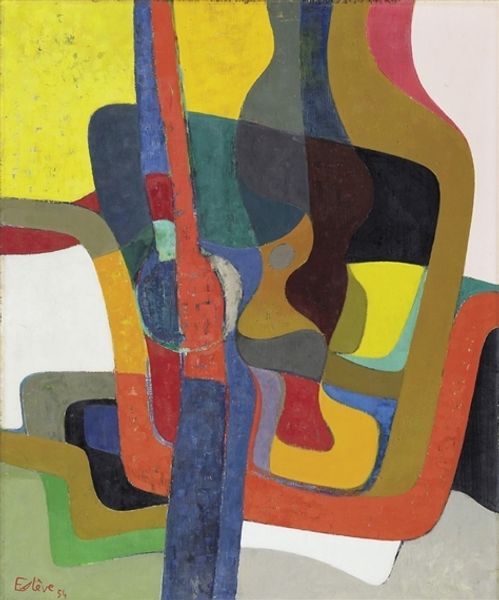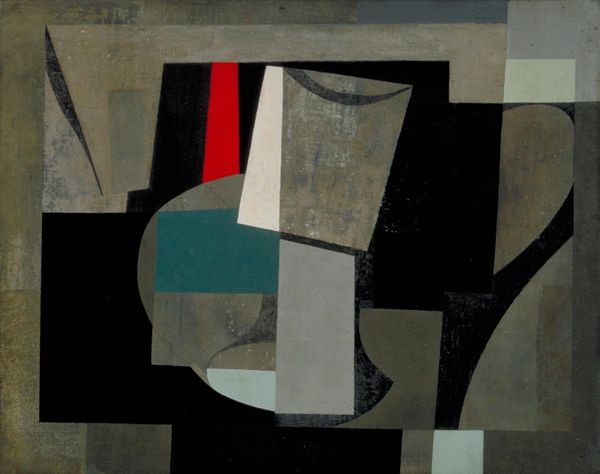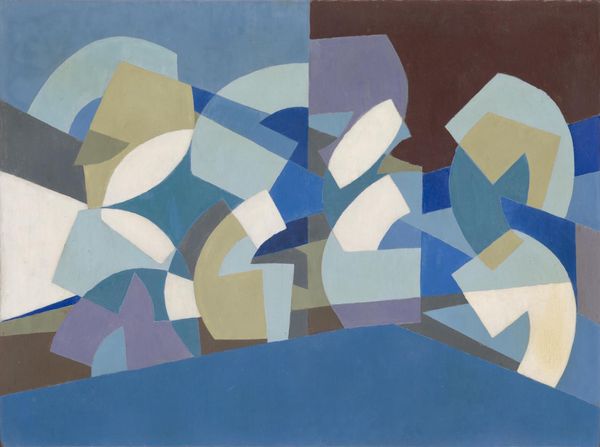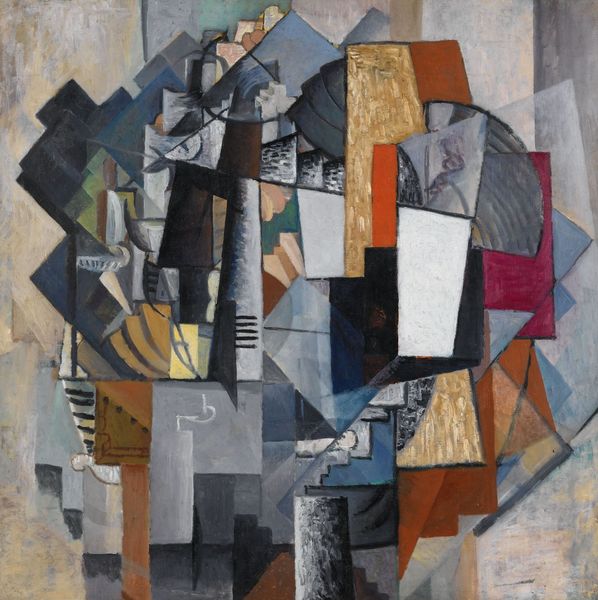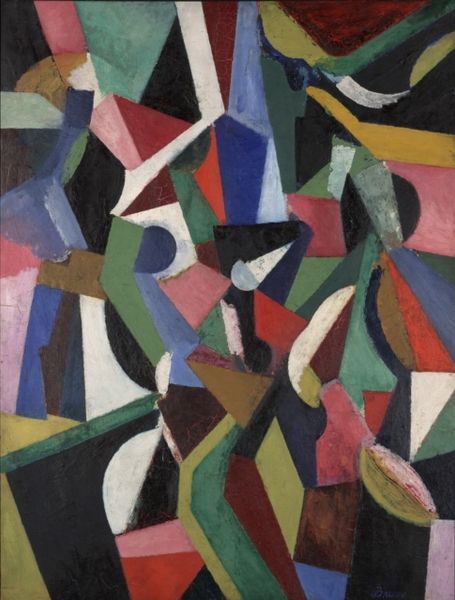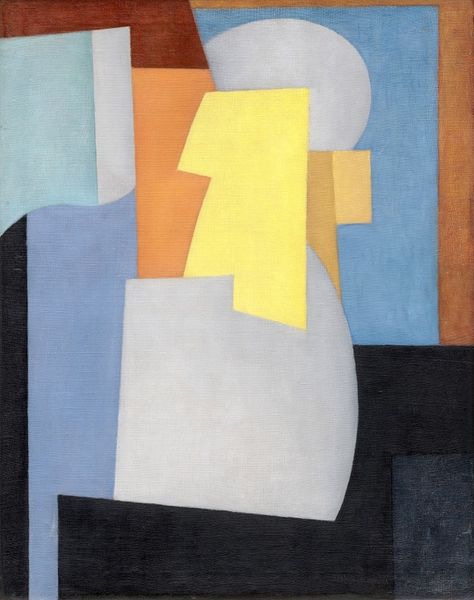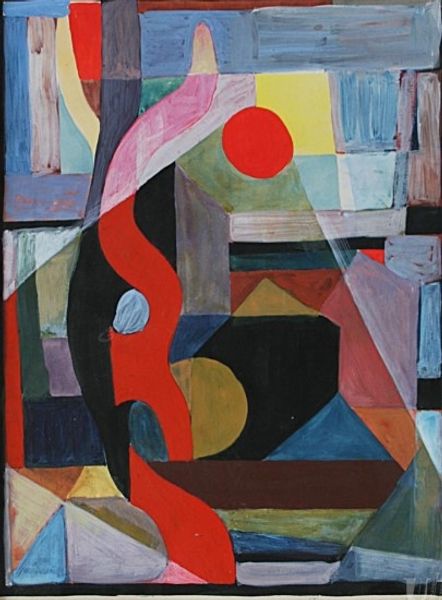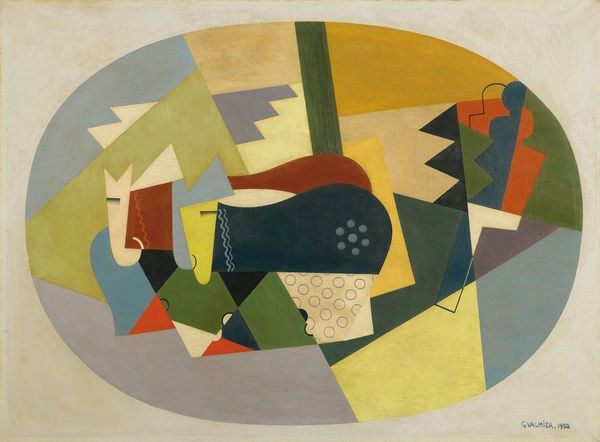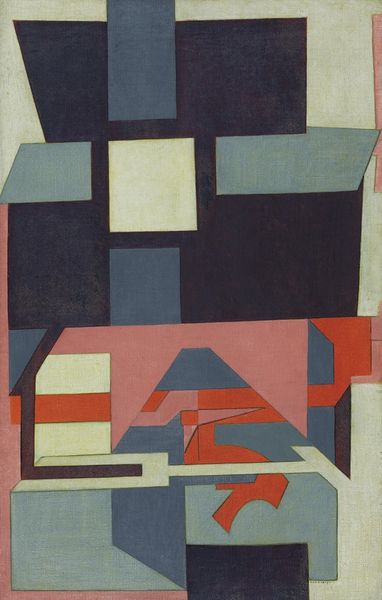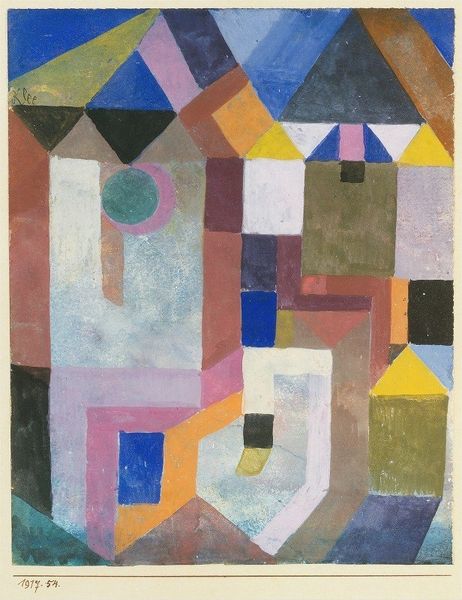
oil-paint, impasto
#
abstract-expressionism
#
abstract painting
#
oil-paint
#
painted
#
oil painting
#
impasto
#
geometric
#
abstraction
#
line
Copyright: Serge Poliakoff,Fair Use
Editor: So, this is Serge Poliakoff's "Abstract Composition" from 1954. It's an oil painting, and I'm really struck by how these geometric forms feel both solid and like they’re floating. What do you see in this piece? Curator: Well, it immediately makes me think about the power of geometry as a kind of universal language. Poliakoff, like many abstractionists, reduces the world to essential shapes and colors. Don't you think that allows for a deeper, almost subconscious communication? Editor: Subconscious? In what way? Curator: Think of a circle – historically, culturally, what does that signify? Unity, wholeness, the eternal. And look at the color choices here – the weight of the darker blues and browns against that vibrant yellow. They're not just aesthetic choices; they evoke specific emotional responses. Editor: I see what you mean. The yellow does feel almost… hopeful? Curator: Exactly. And the layering, the impasto technique, contributes to the painting’s sense of depth. Do you get a feeling that he's building a symbolic landscape of the mind, rather than depicting a physical scene? Editor: That’s a beautiful way to put it. It's like he’s constructing a memory palace of shapes and colors. Curator: Yes! It resonates with our collective past, recalling shared human experiences beyond words. Visual language that creates understanding, almost genetically encoded across time. What do you take away after really considering Poliakoff’s intention? Editor: That there’s a history, even a kind of storytelling, embedded in abstract art that I hadn’t really appreciated before. Thanks for illuminating that! Curator: Absolutely. Every piece carries a weight of cultural meaning within it!
Comments
No comments
Be the first to comment and join the conversation on the ultimate creative platform.
